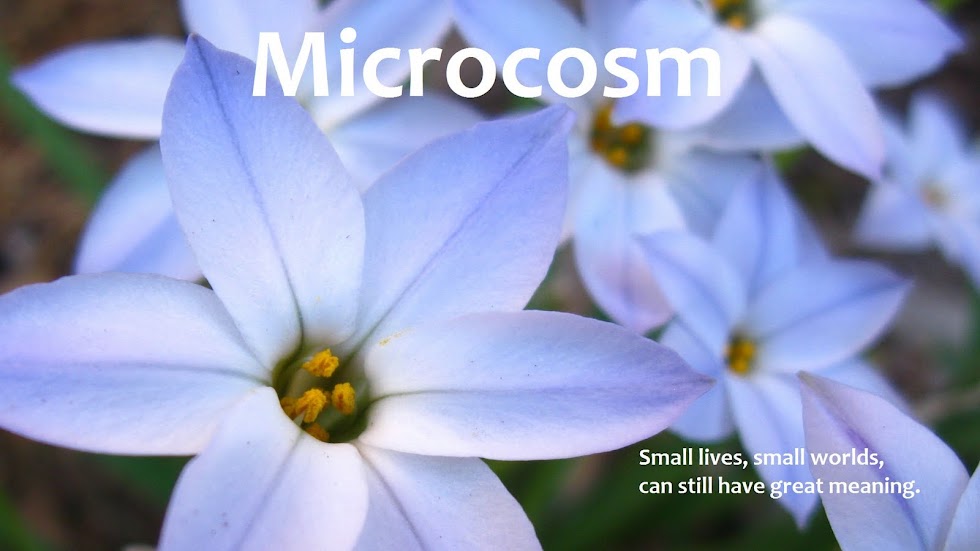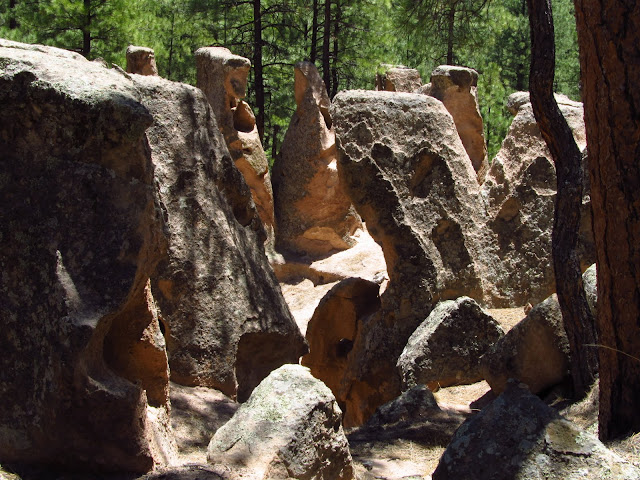or A Good Day for Geometry

We're not exactly
overrun with science fiction and fantasy writers here in New Mexico—you can go for days, even years without meeting one—but we do seem to attract more of them per capita than the national average.* A recent article in the
Albuquerque Journal featured interviews with several of the most prominent. The upshot seemed to be that our cultural diversity and desert landscape make contemplating possibilities easier here, especially if you're already inclined that way.**
This is the place that gave birth to the
atom bomb and to
Microsoft—paradigm-shifting world-changers, science fiction turned real. Yet as the article points out, even while scientists here continue to do cutting edge research, Catholic Hermanos Penitentes perform ritual self-flagellation on Good Friday to atone for their sins. At
Acoma Pueblo the people choose to live traditionally, without electricity, running water, or sewers. In the southeastern plains, enthusiasts mount
UFO observation decks on their roofs. If you want to open your mind to different modes of reality, plenty of options are at hand.
I was thinking about the landscape though—the open, wild, sometimes all-out weird landscape—as a prompt to fantasy while taking an easy hike up Paliza Canyon in the
Jemez Mountains to see the goblin colony there. "Goblin colony" isn't my phrase. The oddly sculpted rock formations found all across the southwest are known as hoodoos or goblins. The stones in this particular colony are made of compressed ash. As rocks go, they are soft, lightweight, and crumbly, like giant meringues that have been rolled in the dirt. They don't feel quite...real.
Wind and water have carved faces into them, or perhaps eroded faces that were already there. Many of them are more or less shapeless masses that somehow still manage to come across as humanoid.
Others are astonishingly geometrical, like pieces of a board game, or a child's match-the-shape set. Somehow they also remind me of the simpler kinds of
petroglyphs, as if a message had been left here and gotten jumbled over time.
When did geometry become the stuff of fantasy? I found myself wondering, remembering high school classes where logical proof loomed large, and fantasy was not encouraged.
But then, the less geometrical hoodoos are the stuff of fantasy, too. I suppose that to people who do not get out enough (ahem), everything unfamiliar is alien and exciting. Still, geometry suggests
agency, someone out there somewhere
making that nice, regular shape. And the grotesque, misshapen rocks suggest that the someone is soooooo not like you. Wandering around among the hoodoos and goblins for a while, you start contemplating possibilities.
This is the way stories are born.
_____________________
* A safe thing to say, since as far as I know no one has actually determined the average number of sci-fi/fantasy writers per capita.
**Matt Andazola, "Fantasy world,"
Albuquerque Journal, April 10, 2011, Lifestyles section. Sorry to go all footnote-y. Unfortunately, links get diverted to the subscription page, but if you're interested in reading the article a search for the author and title words should take you there.































